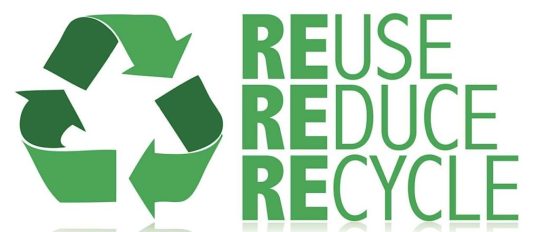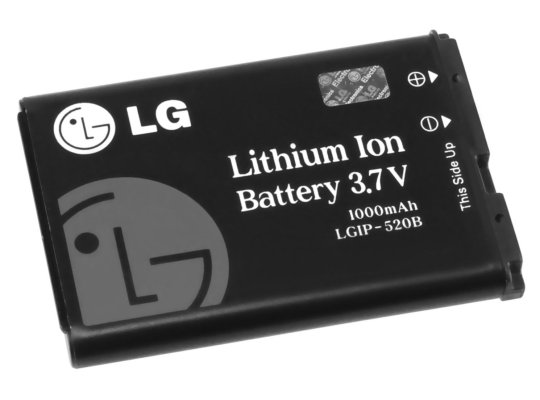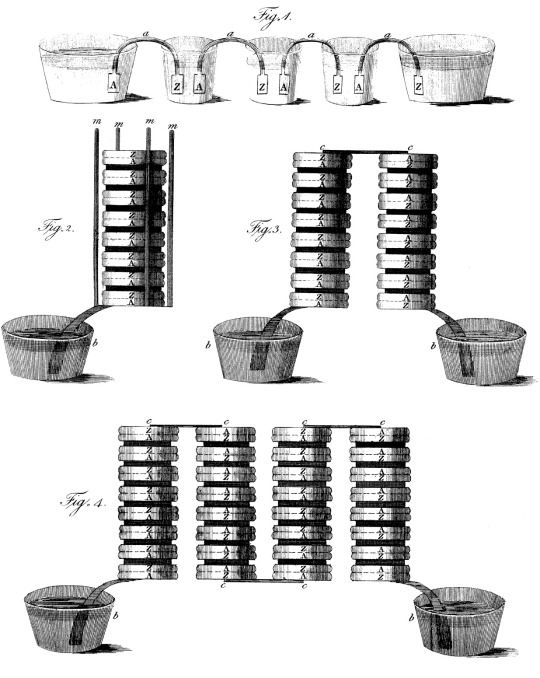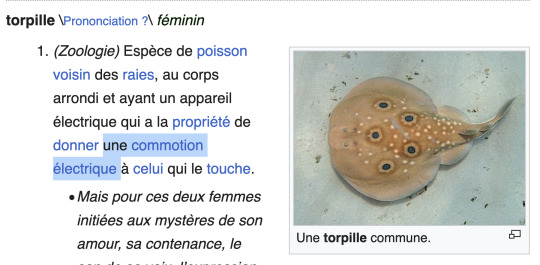#Lithium metal batteries
Link
A National Institute for Materials Science (NIMS) research team has succeeded in substantially improving the cycling performance of a lithium metal battery by developing a mechanically very strong polymeric gel electrolyte and integrating it into the battery as a layer to protect the lithium metal anode. This achievement may greatly facilitate efforts to put lithium metal anodes -- a potentially very high performance anode material -- into practical use.
Today's society is rapidly transforming through the widespread use of digital technologies, the increasing popularity of electric vehicles and the growing use of renewable energy. These shifts have created a steadily rising demand for higher performance lithium secondary batteries. Lithium metal anodes have very large theoretical capacities and low working potentials. However, they also have an issue: the process of lithium dissolution and deposition, which occurs as the battery is charged and discharged, is prone to deterioration, shortening the batteries' charge-discharge cycle lives and posing safety concerns. New technologies capable of stabilizing the charge-discharge cycles of secondary batteries equipped with lithium metal anodes are therefore needed.
This research team developed mechanically tough and stretchable gel electrolytes formed by an organic solvent electrolyte containing a high concentration of lithium salts and a hydrogen-bonded polymer. The team then integrated this gel electrolyte as an artificial layer to protect the lithium metal anode. Experiments demonstrated that the addition of the protective layer significantly improved the battery's cycling stability.
Read more.
12 notes
·
View notes
Link
A new battery for electric cars that can fully charge in 10 to 15 minutes.
#electric cars#harvard john a. paulson school of engineering and applied science. lithium battery#lithium-metal battery#solid-state lithium battery
8 notes
·
View notes
Text
#kirill klip#lithium#copper#gold#silver#royalties#tnr gold#tesla#mariana lithium#ganfeng lithium#electric cars#batteries#argentina#green energy metals#gem royalty
0 notes
Text
The battery wars are heating up
0 notes
Text
Preventing Fires In Your Shop Or Pole Barn: 10 Tips To Keep Your Property Safe!
Continue reading Untitled

View On WordPress
#Fire#Fire Extinguisher#fire safety video#lithium battery fire#Metal Trash Can#Pole Barn#Prevention#Safety#Safety Can#Shop#spontaneous combustion fire#Tragic
0 notes
Text
Benchmark Mineral Intelligence Update
Benchmark Mineral Intelligence Update
Lithium ion battery cells just keep getting cheaper. Benchmark’s global weighted average lithium ion cell price has fallen to $98 per kilowatt-hour for the first time in two years, due to falling raw material prices.
That’s good news for automakers: the cell price is bringing the prospect of a $100/kWh battery pack closer to fruition. At this point EVs could reach price parity with internal…
View On WordPress
0 notes
Text
Exploring Metal Detector Science: Do metal detectors detect wax pens?
Whether you’re a regular vape pen user or about to take your first puff, you might be wondering Do metal detectors detect wax pens? A metal detector will not detect all vape pens.
This is because while some vape pens are made of plastic though the majority are composed of metal. As a result, if someone wishes to use a plastic vape pen, they won’t be identified by the detector.
Understanding Metal…

View On WordPress
#Can detectors detect vape?#Can drug dogs smell carts?#Can drug dogs smell dab wax?#Can I hide my cart in a metal detector?#Can k9 smell through vacuum seal?#Can metal detector detect anything?#Can police dogs detect dab pens?#Can TSA dogs smell gummy edibles?#Can you fly with an elf bar?#Do airports detect dab pens?#Do dab pens have metal?#Do dab pens set off hotel smoke alarms?#Do disposable dab pens have lithium batteries?#do vape pens set off metal detectors at airports#do vapes go off in metal detectors at concerts#Do vapes trigger metal detectors?#Does aluminum foil block metal detectors?#Does TSA inspect vape carts?#How do airports detect drugs?#How do you get a dab pen through TSA?#How do you hide a vape from a metal detector?#How do you not get caught by vape detectors?#how to sneak a cart through a metal detector#how to sneak a dab pen through metal detector#how to sneak a vape into school#What activates metal detectors?#What are in fake dab pens?#What can throw off a metal detector?#What Cannot be detected by a metal detector?#What happens when a vape goes through a metal detector?
0 notes
Text
Lithium-Ion Battery Metals Market to grow at a significant CAGR 34.0%. Lithium-Ion Battery Metals Report by BIS Research provides deep market insight, industry analysis, trends & Strategies and Implementation that will help your business to grow.
#Lithium-Ion Battery Metals Market#Lithium-Ion Battery Metals Report#Lithium-Ion Battery Metals Industry#Advanced Material#Bisresearch
0 notes
Text
The biggest lithium-producing nations in the last 25 years (infographic)

- By Nuadox Crew -
The following infographic ranks the biggest lithium producers by country from 1995 to 2021.
As you might be aware of, the lightweight metal is essential in the cathodes of all lithium-ion batteries used to power electric vehicles.
The utilized data comes from BP’s Statistical Review of World Energy.
> View full size image

> Full size image
Source: Visual Capitalist
Read Also
Global metal mining in 2021 (infographic)
Salton Sea could become world’s largest lithium supplier (video)
0 notes
Text












#🔰 Apple AirPods (2nd Generation) Wireless Earbuds#🔰 Product details#🔰 Product Dimensions#0.65 x 0.71 x 1.59 inches#🔰 Item Weight#3.5 ounces#🔰 Manufacturer#Apple Computer#🔰 ASIN#B07PXGQC1Q#🔰 Item model number#MV7N2AM/A#🔰 Batteries#2 Lithium Metal batteries required. (included)#🔰 Is Discontinued By Manufacturer#No#🔰 Date First Available#March 20#2019#🔰 Buy Now Link: https://amzn.to/3glm6xV#🔰 If you want to buy something#visit the link below#🔰https://linktr.ee/sk_fashion_shops
0 notes
Text
An ingredient in many toothpastes is sodium fluoride, a compound of fluorine. It is added to protect teeth against decay. But compounds containing fluorine have other practical uses that might surprise you. Scientists at the U.S. Department of Energy's (DOE) Argonne National Laboratory have discovered a fluoride electrolyte that could protect a next generation battery against performance decline.
"An exciting new generation of battery types for electric vehicles beyond lithium ion is on the horizon," said Zhengcheng (John) Zhang, a group leader in Argonne's Chemical Sciences and Engineering division.
The chemistries of non-lithium-ion batteries offer twice or more energy stored in a given volume or weight compared to lithium ion. They could power cars for much longer distances and could even power long-haul trucks and aircraft one day. The expectation is that widespread use of such batteries will help address the problem of climate change. The main problem is that their high energy density declines rapidly with repeated charge and discharge.
Read more.
10 notes
·
View notes
Text
Recycling

The processing of making new goods from old scrap or used materials that are thrown away or not in use for a longer period of time and occupying space and harming the environment is known as recycling. Basically, Recycling is done to save energy which is used to develop new goods like metal from ore and plastic from pallets, etc. Manufacturing new materials from raw ore require a whole lot of energy as compared to developing goods or materials by recycling the old ones.
Recycling is the key component of the waste hierarchy which includes reducing, reusing, and recycling. It not only helps in saving the environment but also helps in economic development
Typically different types of material can be recycled like metal, plastic, glass, wood, paper, etc these materials are recycled to the increasing demand for this material which is developed using scarce resources like mineral ores, coal, petroleum, oil, and natural gas. Recycling also helps in reducing the solid waste deposited in landfills but also helps in reducing the pollution of air, water, and land resulting from waste disposal.
Common Recyclable Materials Are
Metal Recycling - Metal Recycling is the process of recycling various scrap metals without affecting or degrading their properties. Metal recycling helps various industries to get raw materials to manufacture new goods like Automobiles, crockery, packaging, and many more. Metal Waste recycling allows us to preserve natural resources.
Plastic Recycling - Plastic recycling is done to get rid of the plastic waste which remains as it is on the surface for several years as plastic waste doesn’t decompose easily it will also harm the environment and natural species also plastic is recycled to develop new products like toys, household products, automotive products, etc
Paper Recycling - Every tone of Paper recycling can save up to 17 trees, two cubic yards of landfill capacity, and 4100 kW/hours of electricity also 70% of every is saved if the paper is recycled instead of made new.
Lithium Ion Battery Recycling-Lithium Battery recycling is the only way to reserve minerals like cobalt, and graphite lithium because these minerals are used to make lithium batteries. Lithium Ion batteries are used over alkaline batteries If these lithium Battery doesn’t manage properly then they could cause harm to human life and the environment.
Some of the Benefits of Recycling Are:
Protect Environment and Wildlife
Saves Natural resources
Saves money
Helps in developing new products from old ones
Helps in Reducing the amount of solid waste deposited in landfills
Create Jobs
Most Common Process of Recycling
Recycling of every material is almost done in a similar way of steps which include collection, sorting shredding, etc
Collection - In this process, all the scrap or waste material that is to be recycled is collected from various sources like from bins which are placed in public places for their convenience and from the waste or scrap collectors who collect this material for recycling
Sorting - This is done after the collection of all the material is done in this process all the material which is collected is now being sorted on the basis of their type like which materials are recyclable or which are not and also the waste particles are being removed from the material in this phase only
Shredding- After collection, sorting is done next step is shredding in this process all the material after sorting is transferred to the shredders which is having cylindrical bodies with blades inside it that shreds the material into small pieces or chunks for easy processing of that material.
#Metal Recycling#Scrap metal#Metal Waste Recycling#scrap metal recycling#Scrap Yard#plastic recycling#plastic waste recycling#waste plastic#plastic scrap#plastic recycling plant#Lithium-ion Battery Recycling#Lithium Battery Recycling#Lithium battery Recycling plant#lithium-ion recycling#lithium battery waste
0 notes
Text
Alessandro Volta's Electric Eels
Okay so, it turns out that your cell phone battery is a basically a homunculus of an electric fish.


These are the same thing. Let me explain.
@fishteriously, a paleoichthyologist, told me that Alessandro Volta invented the electric battery after studying electric eels and rays. This sounded like a fun science factoid! I wanted to know more! I saw the claim repeated on any number of pop science articles from the last century or so, but none that quoted from primary sources.
The voltaic pile is one of the most important inventions, ever, of all time. Before Volta, electricity could be stored in Leyden jar capacitors, which would discharge in a single, brief burst. Volta's pile was the first method of producing a continuous electric current, which launched the modern era of electricity as we know it. His explanation for how it worked was incorrect, but it was still a massive breakthrough.
Batteries use the same principle to this day, just with different materials (e.g. cobalt oxide, graphite, and lithium salts rather than silver, zinc, and brine).
But is it a fish?

This is Volta's first schematic of a battery, or "voltaic pile" – at the time, "battery" referred to a bunch of Leyden jars linked in series, the term wouldn't come to refer to piles until later. "Z" and "A" stand for zinc and silver ("argentum"), with brine-soaked paper disks between. It does look a bit like an eel?
But is it truly?

Surely, if Volta modeled the pile after electric fishes, I’d be able to find a citation! Wikipedia is usually a good place to start when hunting primary sources, but no luck. No mention of fish at all. I trust fishteriously more than wikipedia, however, so I went digging. Looks like Volta first reported his discovery in a Letter to the Royal Society in 1800.

Found the letter!

Aw beans, it’s in French. I haven’t studied French since high school.

BUT WAIT. WHAT WAS THAT.


Une commotion électrique? A trembling eel???
Okay so now I NEEDED to read the letter in English. I found an English-language summary published by the Royal Society, but it looks like the only English translation of the full letter was in the appendix of an out-of-print book called “Alessandro Volta and the Electric Battery.”

So I bought a used copy. Let's see what Volta has to say about this:

"To this apparatus ... I have constructed it, in its form to the natural electric organ of the torpedo or electric eel, &c, than to the Leyden flask and electric batteries [battery = linked Leyden flasks], I would wish to give the name of artificial electric organ."
Yes! The voltaic pile was explicitly modeled after electric fishes – torpedo rays and electric eels. Fishteriously was 100% correct. Volta never even calls it a "pile," it is always "artificial electric organ." A significant portion of the letter is devoted to electric eels and torpedo rays, in fact.
But also, the rest of the letter is bonkers.

He wrote pages on painful experiments with the artificial electric organ – touching it, poking it into his eyes and ears, making other people touch it, generally just shocking the ever loving hell out of himself over and over. He routinely shocks himself so hard that he has to take breaks. And of course, he licks it.
But that's not the best part:

He says that the artificial electric organ can be turned sideways and submerged in liquid...
"...by which means these cylinders would have a pretty good resemblance to the electric eel ... they might be joined together by pliable metallic wires or screw springs, and then covered with a skin terminated by a head and tail properly formed, &c."
There you have it. One of the most important scientific discoveries of all time, and it includes a crafts project for building an authentic electric eel puppet.
In summary, next time you charge your phone, take a moment to thank the soul of the electric fish inside of it.
2K notes
·
View notes
Text
/r/EggmanEmpire
Good ways to support the empire from home?
Hi everyone, I'm a big supporter of the Eggman Empire as I believe it is our only true path towards proper industrialization. Local leadership has shown no interest in developing our economy (we don't even have currency?), and I just don't see a path to modernization that doesn't involve a complete empire takeover of the islands.
Obviously, I cannot express these views in real life. My friends and family would kill me. Our village sits next to an abandoned empire lithium mine, and they already yelled at me once for suggesting we should start mining it to sell on the global market. It's sad that Sonic's popularity has bolstered reactionary agrarianist sentiment to such an extreme.
I've been looking for ways to subvert their attitudes and help the empire without putting my reputation on the line, but it's hard to support the empire covertly. Lately, I've taken to throwing car batteries into the ocean, but I can't access them often enough to feel that I'm making a real difference. It's honestly pretty discouraging.
Does anyone have any suggestions?
Comments:
egghead927373: I'm actually trying to home brew a new Metal Virus in my basement lab. If you know anything about the subject matter, please feel free to reach out--I would love to have Mobian supporters on the project. I had to cut contact with the humans because they were being weird about it. I don't understand why human empire supporters always have to be so dismissive or straight up disrespectful to fellow supporters on the islands.
Replies:
TheDoctorHimself (mod): You're home brewing WHAT
#egghead comment is only slightly inspired by my oc#sonic the hedgehog#dr eggman#this is self indulgent sorry#unreality#redposts
984 notes
·
View notes
Text
A new report by environmental groups lays out a case for banning deep sea mining—and explains why the real solution to humanity’s energy crisis might just be sitting in the trash.
Deep sea mining is the pursuit of rare, valuable minerals that lie undisturbed upon the ocean floor—metals like nickel, cobalt, lithium, and rare earth elements. These so-called critical minerals are instrumental in the manufacture of everything from electric vehicle batteries and MRI machines to laptops and disposable vape cartridges—including, crucially, much of what’s needed to transition away from fossil fuels. Political leaders and the companies eager to dredge up critical minerals from the seafloor tend to focus on the feel-good, climate-friendly uses of the minerals, like EV batteries and solar panels. They’ll proclaim that the metals on the deep seafloor are an abundant resource that could help usher in a new golden age of renewable energy technology.
But deep sea mining has also been roundly criticized by environmentalists and scientists, who caution that the practice (which has not yet kicked off in earnest) could create a uniquely terrible environmental travesty and annihilate one of the most remote and least understood ecosystems on the planet.
There has been a wave of backlash from environmentalists, scientists, and even comedians like John Oliver, who devoted a recent segment of Last Week Tonight to lambasting deep sea mining. Some companies that use these materials in their products—Volvo, Volkswagen, BMW, and Rivian among them—have come out against deep sea mining and pledged not to use any metals that come from those abyssal operations. (Some prominent companies have done the exact opposite; last week, Tesla shareholders voted against a moratorium on using minerals sourced from deep sea mining.)
Even if you can wave away that ecological threat, mining the sea might simply be wholly unnecessary if the goal is to bring about a new era of global renewable energy. A new report, aptly titled “We Don’t Need Deep-Sea Mining,” aims to lay out why.
The report is a collaboration between the advocacy group US PIRG, Environment America Policy Center, and the nonprofit think tank Frontier Group. Nathan Proctor, senior director of the Campaign for the Right to Repair at PIRG and one of the authors of the new report, says the solution to sourcing these materials should be blindingly obvious. There are critical minerals all around us that don’t require diving deep into the sea. You’re probably holding some right now—they’re in nearly all our devices, including the billions of pounds of them sitting in the dump.
The secret to saving the deep sea, Proctor says, is to prioritize systems that focus on the materials we already have—establishing right to repair laws, improving recycling capabilities, and rethinking how we use tech after the end of its useful life cycle. These are all systems we have in place now that don’t require tearing up new lands thousands of feet below the ocean.
“We don't need to mine the deep sea,” Proctor reiterates. “It's about the dumbest way to get these materials. There's way better ways to address the needs for those metals like cobalt, nickel, copper, and the rest.”
Into the Abyss
Schemes for delving into the deep ocean have been on the boards for years. While the practice is not currently underway, mining companies are getting ready to dive in as soon as they can.
In January 2024, the Norwegian Parliament opened up its waters to companies looking to mine resources. The Metals Company is a Canadian mining operation that has been at the forefront of attempts to mine in the Pacific Ocean’s Clarion-Clipperton Zone (CCZ)—an area of seabed that spans 3,100 miles between Mexico and Hawaii.
The proposed mining in the CCZ has gotten the most attention lately because the Metals Company secured rights to access key areas of the CCZ for mining in 2022, and its efforts are ramping up. The process involves gathering critical minerals from small rock-like formations called polymetallic nodules. Billions of these nodules rest along the seabed, seemingly sitting there ripe for the taking (if you can get down to them). The plan—one put forth by several mining companies, anyway—is to scrape the ocean floor with deep sea trawling systems and bring these nodules to the surface, where they can be broken down to extract the shiny special metals inside. Environmentalists say this poses a host of ecological problems for everything that lives in the vicinity.
Gerard Barron, the CEO of the Metals Company, contends that his efforts are misunderstood by activists and the media (especially, say, John Oliver).
“We're committed to circularity,” Barron says. “We have to drive towards circularity. We have to stop extracting from our planet. But the question is, how can you recycle what you don’t have?”
Both Barron and the authors of the activist report acknowledge that there aren’t perfect means of resource extraction anywhere—and there’s always going to be some environmental toll. Barron argues that it is better for this toll to play out in one of the most remote parts of the ocean.
“No matter what, you will be disrupting an ecosystem,” says Kelsey Lamp, ocean campaign director with the Environment America Research and Policy Center and an author of the report. “This is an ecosystem that evolved over millions of years without light, without human noise, and with incredibly clear water. If you disrupt it, the likelihood of it coming back is pretty low.”
For many of the life-forms down in the great deep, the nodules are the ecosystem. Removing the nodules from the seabed would remove all the life attached to them.
“This is a very disruptive process with ecosystems that may never recover,” says Tony Dutzik, associate director and senior policy analyst at the nonprofit think tank Frontier Group and another author of the report. “This is a great wilderness that is linked to the health of the ocean at large and that has wonders that we’re barely even beginning to recognize what they are.”
Barron counters that the life in the abyssal zone is less abundant than in an ecosystem like rainforests in Indonesia, where a great deal of nickel mines operate—although scientists discovered 5,000 new species in the CCZ in 2023 alone. He considers that the lesser of two evils.
“At the end of the day, it's not that easy,” You can't just say no to something. If you say no to this, you're saying yes to something else.”
The Circular Economy
Barron and others make the case that this ecosystem disruption is the only way to access the minerals needed to fuel the clean-tech revolution, and is therefore worth the cost in the long run. But Proctor and the others behind the report aren't convinced. They say that without fully investing in a circular economy that thinks more carefully about the resources we use, we will continue to burn through the minerals needed for renewable tech the same way we've burned through fossil fuels.
“I just had this initial reaction when I heard about deep sea mining,” Proctor says. “Like, ‘Oh, really? You want to strip mine the ocean floor to build electronic devices that manufacturers say we should all throw away?’”
While mining companies may wax poetic about using critical minerals for building clean tech, there's no guarantee that's where the minerals will actually wind up. They are also commonly used in much more consumer-facing devices, like phones, laptops, headphones, and those aforementioned disposable vape cartridges. Many of these devices are not designed to be long lasting, or repairable. In many cases, big companies like Apple and Microsoft have actively lobbied to make repairing their devices more difficult, all but guaranteeing more of them will end up in the landfill.
“I spend every day throwing my hands up in frustration by just how much disposable, unfixable, ridiculous electronics are being shoveled on people with active measures to prevent them from being able to reuse them,” Proctor says. “If these are really critical materials, why are they ending up in stuff that we're told is instantly trash?”
The report aims to position critical minerals in products and e-waste as an “abundant domestic resource.” The way to tap into that is to recommit to the old mantra of reduce, reuse, recycle—with a couple of additions. The report adds the concept of repairing and reimagining products to the list, calling them the five Rs. It calls for making active efforts to extend product lifetimes and invest in “second life” opportunities for tech like solar panels and battery recycling that have reached the end of their useful lifespan. (EV batteries used to be difficult to recycle, but more cutting-edge battery materials can often work just as well as new ones, if you recycle them right.)
Treasures in the Trash
The problem is thinking of these deep sea rocks in the same framework of fossil fuels. What may seem like an abundant resource now is going to feel much more finite later.
“There is a little bit of the irony, right, that we think it's easier to go out and mine and potentially destroy one of the most mysterious remote wildernesses left on this planet just to get more of the metals we're throwing in the trash every day,” Lamp says.
And in the trash is where the resources remain. Electronics manufacturing is growing five times faster than e-waste recycling, so without investment to disassemble those products for their critical bits, all the metals will go to waste. Like deep sea mining, the infrastructure needed to make this a worthwhile path forward will be tremendous, but committing to it means sourcing critical minerals from places nearby, and reducing some waste in the process.
Barron says he isn't convinced these efforts will be enough. “We need to do all of that,” Barron says, “You know, it's not one or the other. We have to do all of that, but what we have to do is slow down destroying those tropical rainforests.” He adds, “If you take a vote against ocean metals, it is a vote for something else. And that something else is what we’ve got right now.”
Proctor argues that commonsense measures, implemented broadly and forcefully across society to further the goal of creating a circular economy, including energy transition minerals, will ultimately reduce the need for all forms of extraction, including land and deep-sea mining.
“We built this system that knows how to do one thing, which is take stuff out of the earth, put it into products and sell them, and then plug our ears and forget that they exist,” Proctor says. “That’s not the reality we live in. The sooner that we can disentangle that kind of paradigm from the way we think about consumption and industrial policy the better, because we're going to kill everybody with that kind of thinking.”
Just like mining the deep sea, investing in a circular economy is not going to be an easy task. There is an allure of deep sea mining when it is presented as a one-stop shop for all the materials needed for the great energy transition. But as the authors of the report contend, the idea of exploiting a vast deposit of resources is the same relationship society has had with fossil fuels—they’re seemingly abundant resources ripe for the picking, but also they are ultimately finite.
“If we treat these things as disposable, as we have, we’re going to need to continually refill that bucket,” Dutzik says. “If we can build an economy in which we’re getting the most out of every bit of what we mine, reusing things when we can, and then recycling the material at the end of their lives, we can get off of that infinite extraction treadmill that we’ve been on for a really long time.”
37 notes
·
View notes